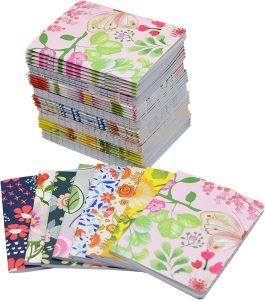Creating booklets to share your expertise is a great way to distill your knowledge and insights into a concise and impactful format. Here’s a step-by-step guide on how to effectively use booklets to share your expertise:
- Identify Your Expertise: Determine your area of expertise or the topic you want to share. It could be related to your profession, hobby, research, or any subject you’re knowledgeable about.
- Define Your Audience: Clarify who your target audience is. Are you addressing beginners, enthusiasts, professionals, or a specific demographic? Understanding your audience will help you tailor your content appropriately.
- Choose a Focused Topic: Narrow down your expertise to a specific, focused topic. Trying to cover too much ground can lead to diluted content. A focused topic allows for depth and thorough exploration.
- Outline Your Content: Create a structured outline for your booklet. Divide it into sections or chapters that logically guide the reader through your expertise. Each section should cover a specific aspect of the topic.
- Craft Clear and Concise Content: Write the content of your booklet with clarity and conciseness. Keep sentences straightforward, avoid jargon when possible, and explain complex ideas in accessible terms. Use real-world examples and case studies to illustrate your points.
- Design and Layout: Design the layout of your booklet thoughtfully. Choose fonts, colors, and visuals that enhance readability. Use headings, subheadings, bullet points, and other formatting elements to make the content visually appealing and easy to navigate.
- Include Visuals: Incorporate relevant images, diagrams, charts, or infographics to enhance understanding. Visuals can break up text and provide visual explanations of complex concepts.
- Provide Practical Tips and Actionable Advice: Share practical tips, best practices, and actionable advice that readers can apply to their own situations. Offering tangible takeaways enhances the value of your expertise.
- Cite Sources and References: If your expertise is built on research or existing knowledge, include proper citations and references to validate your claims and provide readers with sources for further exploration.
- Create Interactive Elements (Optional): Depending on the format and distribution of your booklet, consider adding interactive elements like QR codes linking to videos, websites, or additional resources. This can make the learning experience more engaging.
- Proofread and Edit: Thoroughly proofread and edit your booklet for grammar, spelling, and clarity. You want your expertise to be conveyed without distractions.
- Print and/or Distribute: Decide whether you’ll be printing physical copies or distributing digital versions. Printing might be suitable for events, workshops, or as branded material. Digital distribution can include eBooks, PDFs, or online platforms.
- Promote Your Booklet: Promote your booklet through your website, social media channels, email newsletters, or relevant communities. Highlight the value and insights it offers to attract readers.
- Collect Feedback: Encourage readers to provide feedback on your booklet. This can help you improve future editions and tailor your expertise-sharing efforts to meet their needs.
- Continuously Update and Expand: Keep your expertise booklet up-to-date as trends or new developments arise in your field. You can also expand your expertise into a series of booklets to cover various aspects of the topic.
Sharing your expertise through booklets allows you to showcase your knowledge, connect with an audience, and contribute positively to your field or community. It’s a versatile medium that enables you to distill complex information into an easily digestible format.


























